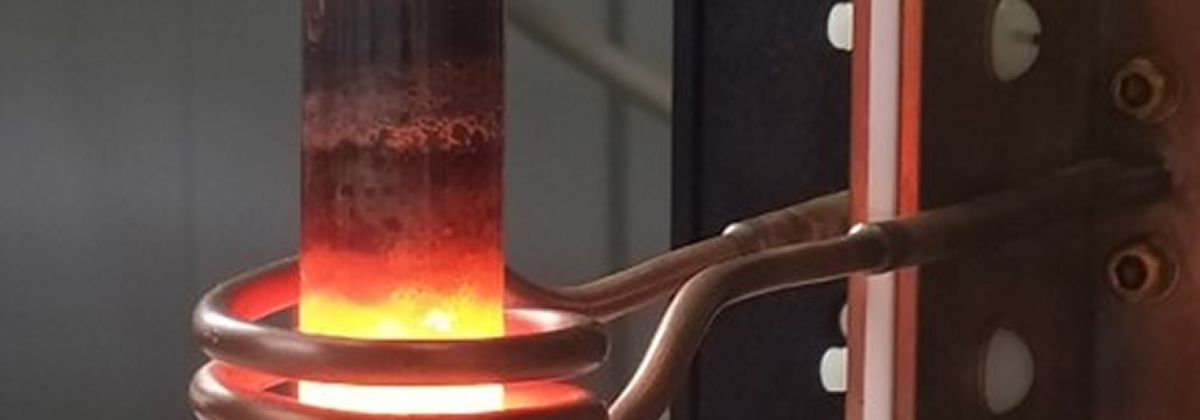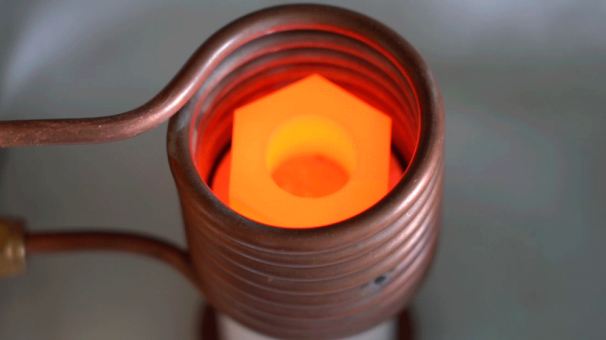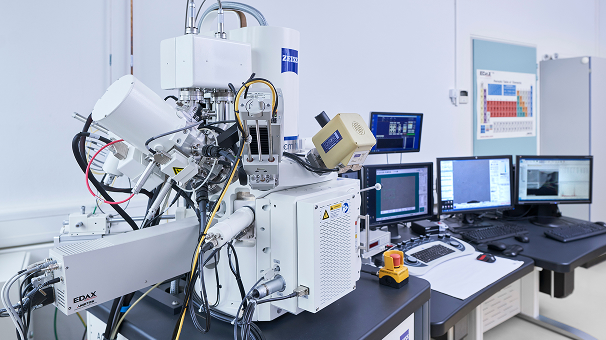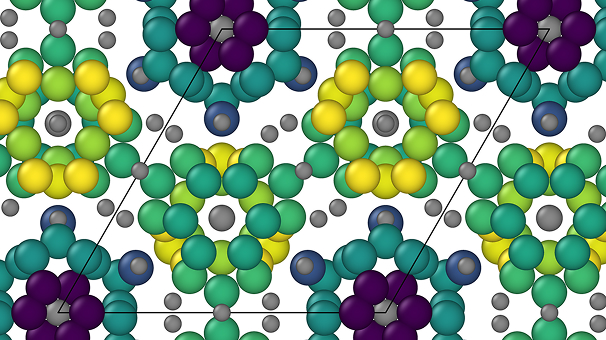Head of Deparment: Dr. Michael Rieth
Our research and development work is part of large-scale research and makes an important contribution to energy research at national and European level. As a partner in the Helmholtz Association's energy program and a member of the EUROfusion large-scale research project, we are actively shaping the future of nuclear fusion.
Focus
We develop structural and functional materials that can withstand extreme conditions. These include high temperatures and heat fluxes, as well as high-energy neutron radiation in combination with mechanical, chemical, or time-critical loads. The material properties are tailored by us for each specific application case. In this way, we open up new applications and areas of use in the field of energy conversion. Typical examples include components of a fusion power plant, such as plasma-facing components (divertor), heat exchangers (blanket), and neutron multipliers (tritium breeding elements).
Competence
Our research is application-oriented and, above all, takes place under the aspects of large-scale research. Therefore, alongside sustainability and cost-effectiveness, the focus is particularly on the use of industrial production, forming, joining, and manufacturing technologies. Starting from an idea, our materials development encompasses theoretical modelling, thermodynamic and thermo-mechanical simulations, production in the laboratory and on an industrial scale, experimental characterization of all relevant properties, microstructural and chemical analyses, the manufacturing of prototypes (semi-finished products and mockups), as well as component testing under the respective operating conditions. Our goal is to provide novel materials, including the materials technology process parameters and key characteristics required for production and component manufacturing.
Network
Despite our focus on materials for very specific applications, the boundary conditions, requirements, and properties to be considered are very complex and diverse. So not all necessary investigations and experiments can be carried out within our department. Therefore, we collaborate closely with a variety of partners from KIT, industry, and other research institutions both domestically and internationally. In particular, the characterization and testing of prototypes requires access to large-scale facilities, such as test reactors for neutron irradiation: : HFIR, BR2, or experimental setups for the investigation of plasma-material interactions: HELOKA, ASDEX, GLADIS, JUDITH & JULE-PSI.



Automated modeling and validation
GroupPublicationslist
Tadson, B.; Mädche, A.
2026. Information Systems and Neuroscience – NeuroIS Retreat 2025, Vienna, Austria. Ed.: F. Davis, 259–270, Springer Nature Switzerland. doi:10.1007/978-3-032-00815-2_24
Al-Wahaibi, L. H.; Abou-Zied, H. A.; Nieger, M.; Bräse, S.; Youssif, B. G. M.; Tawfeek, H. N.
2025. Frontiers in Chemistry, 13. doi:10.3389/fchem.2025.1748491
Ekman, A.; Ekman, A. A.; Chen, J.-H.; Larabell, C. A.; Gros, M. A. L.; Weinhardt, V.
2025. Physica Scripta, 100 (12), 126008. doi:10.1088/1402-4896/ae26f9
Schukraft, J.; Fünkner, M.; Zhang, F.; Liu, H.; Wilhelm, M. L.; Kaptur, L.; Henning, F.; Hrymak, A. N.
2025. Journal of Thermoplastic Composite Materials. doi:10.1177/08927057251412780
Gruber, J. R.; Schiweck, C.; Ruf, A.; Süß, E. D.; Japtok, P.; Schouler, N.; Edwin Thanarajah, S.; Reif, A.; Matura, S.
2025. Scientific Reports, 15 (1), 44417. doi:10.1038/s41598-025-32454-4
Xing, Z.; Li, Y.; Dai, Y.; Wei, J.; Ma, M.; Zhang, X.; Gao, H.; Kunstmann, H.
2026. Weather and Climate Extremes, 51, 100847. doi:10.1016/j.wace.2025.100847
Almanza Soto, M.; Borysov, O.; Ferber, T.; Huang, S.; Irles, A.; Klute, M.; Márquez Hernández, J. P.; Pérez Segura, J.; Quishpe, R.; Soreq, Y.; Tal Hod, N.; Trevisani, N.
2025. Physical Review D, 112 (11), 112014. doi:10.1103/n2nh-7v5b
Wicke, T.; Weymann, L.; Neef, C.; Tübke, J.
2025. BATTERIES-BASEL, 11 (12), 457. doi:10.3390/batteries11120457
Capucha, R.; Elyaouti, K.; Mühlleitner, M.; Plotnikov, J.; Santos, R.
2026. Computer Physics Communications, 320, 109968. doi:10.1016/j.cpc.2025.109968
Abram, U.; Roca Jungfer, M.
2025. Molecules, 30 (24), 4813. doi:10.3390/molecules30244813
Stohl, L.; Tonon, C.; Cook, J.; Gorbushina, A.; Dehn, F.; von Werder, J.
2026. Materials and Structures, 59 (1), 22. doi:10.1617/s11527-025-02864-x
Conzelmann, A.; Seifert, H. J.; Mozaffari-Jovein, H.
2025. The International Journal of Advanced Manufacturing Technology. doi:10.1007/s00170-025-17075-5
Preuss, A.; van de Kamp, T.; Hamann, E.; Zuber, M.; Ornowski, L.; Gorb, S. N.
2025. Scientific Reports, 15 (1), 44732. doi:10.1038/s41598-025-32804-2
Golalikhani, M.; Lapp, C. J.; Prakash, N. S.; Hille-Reichel, A.; Gescher, J.; Elreedy, A.
2026. International Journal of Hydrogen Energy, 202, 153107. doi:10.1016/j.ijhydene.2025.153107
Mueller, E.; Wuest, F.; Schmidt, B.; Maedche, A.
2026. Information Systems and Neuroscience – NeuroIS Retreat 2025, Vienna, Austria. Ed.: F. Davis, 225–232, Springer Nature Switzerland. doi:10.1007/978-3-032-00815-2_21
Sax, C.; Griesmaier, R.; Kriegseis, J.
2026. Measurement Science and Technology, 37 (2), 025201. doi:10.1088/1361-6501/ae2641
Riedl, R.; Maedche, A.
2026. Information Systems and Neuroscience – NeuroIS Retreat 2025, Vienna, Austria. Ed.: F. Davis, 159–167, Springer Nature Switzerland. doi:10.1007/978-3-032-00815-2_15
Abusaif, F.
2025, September. RF2.0 Project and Review Meeting (2025), Berlin, Germany, September 17–19, 2025




